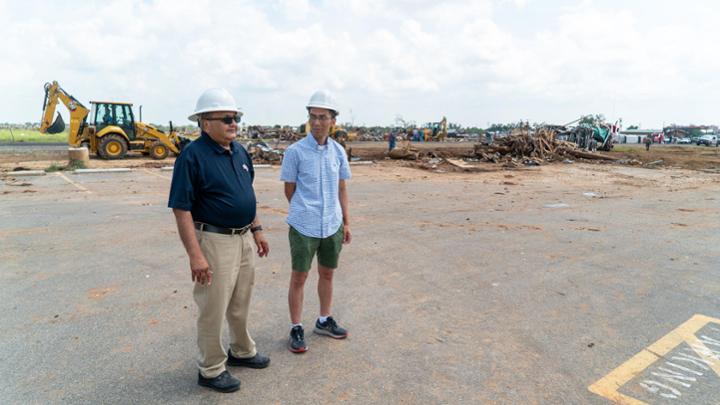Two Texas Tech National Wind Institute engineers surveyed damaged buildings after the Matador tornado with hopes of developing more windstorm-resistant structures.
Inside Billie Dean’s Restaurant in Matador, a spraypainted orange X covers the right side of an intricate mural that fills the entire left wall with a fiery sunset and a cowboy bathing in a stock tank: a depiction of a “Saturday Night in Matador, TX.”
The stark marking is not graffiti. Nor are the overturned tables and chairs, or the salt and pepper shakers and napkin holders strewn along the floor, vandalism to this small-town eatery.
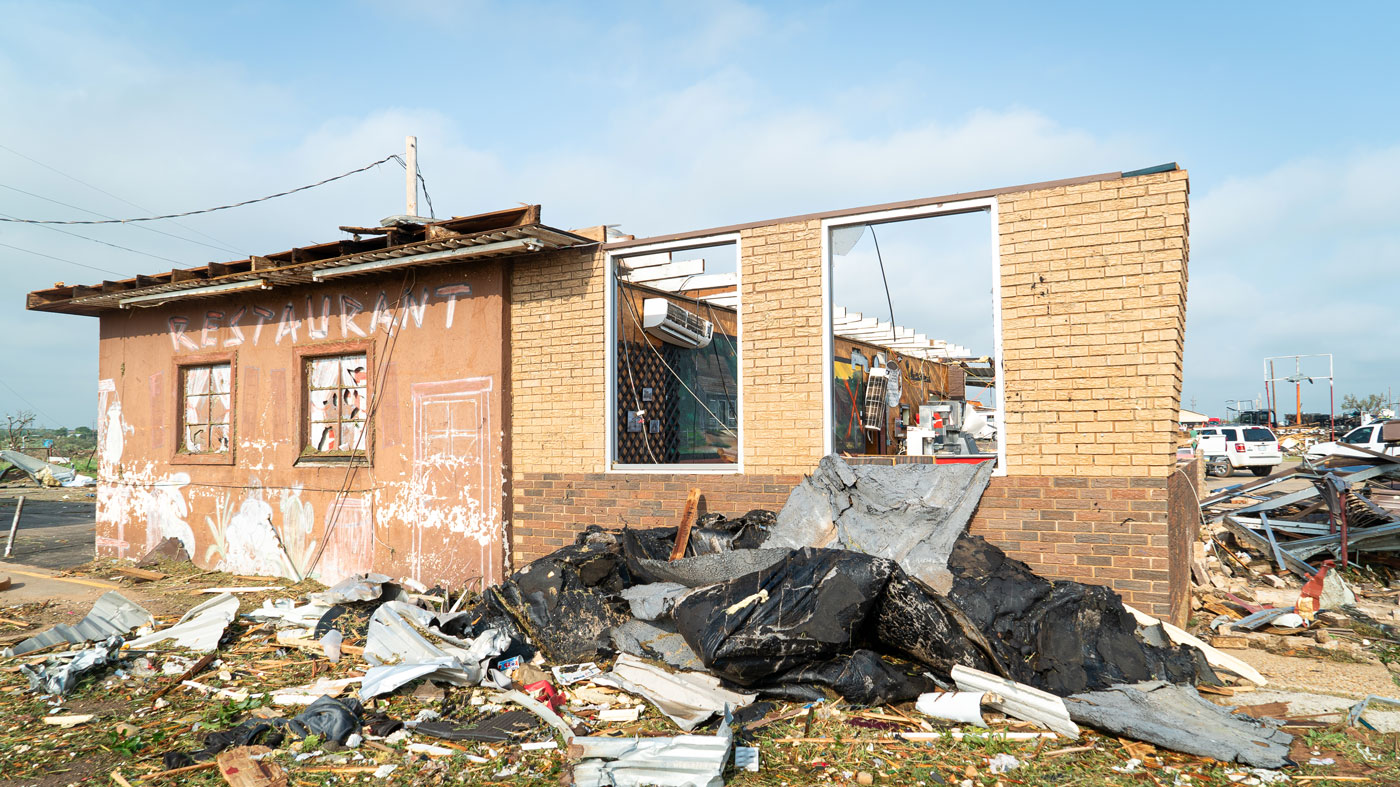
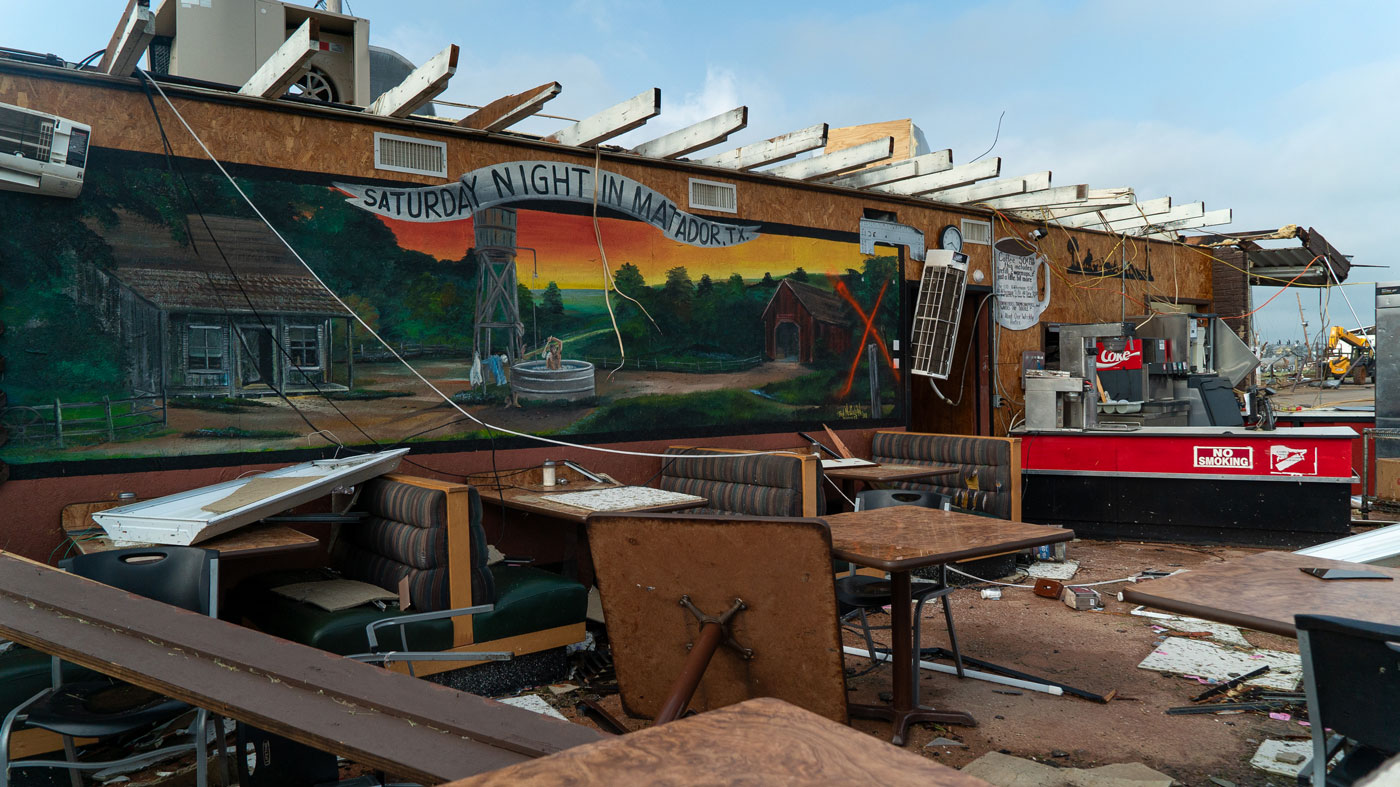
This is the place where an employee took shelter under the grill as a tornado ripped the roof from the restaurant the evening of June 21. Soon after, a search and rescue team checked the building, left the X, and rushed inside the next structures.
By sunrise the next day, light shone onto the west side of Matador essentially flattened by the third-of-a-mile-wide tornado that produced peak wind gusts in the 145 to 165 mph range.
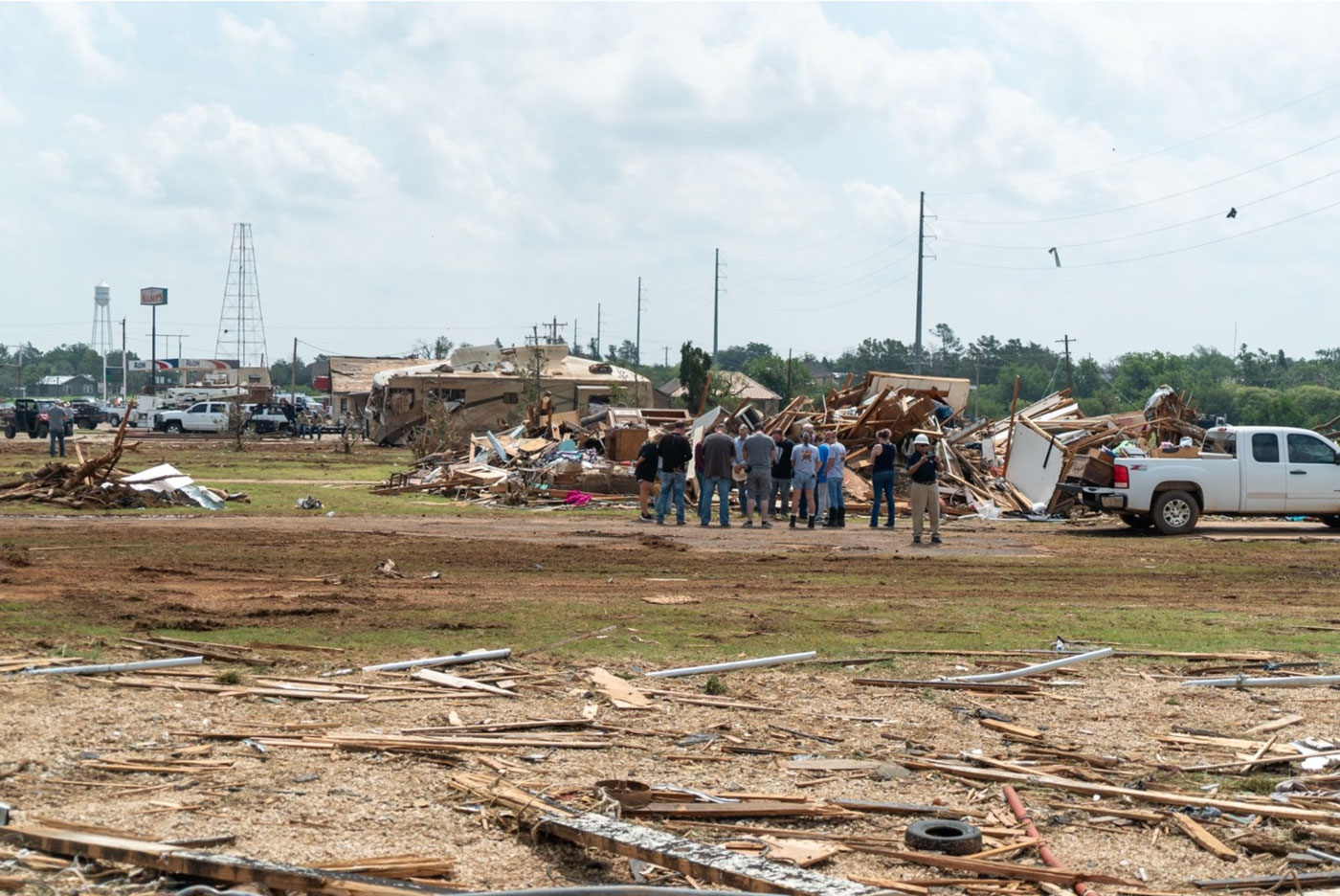
“I have never seen anything like this,” said Delong Zuo as he stared at the aftermath. “This is just unreal.”
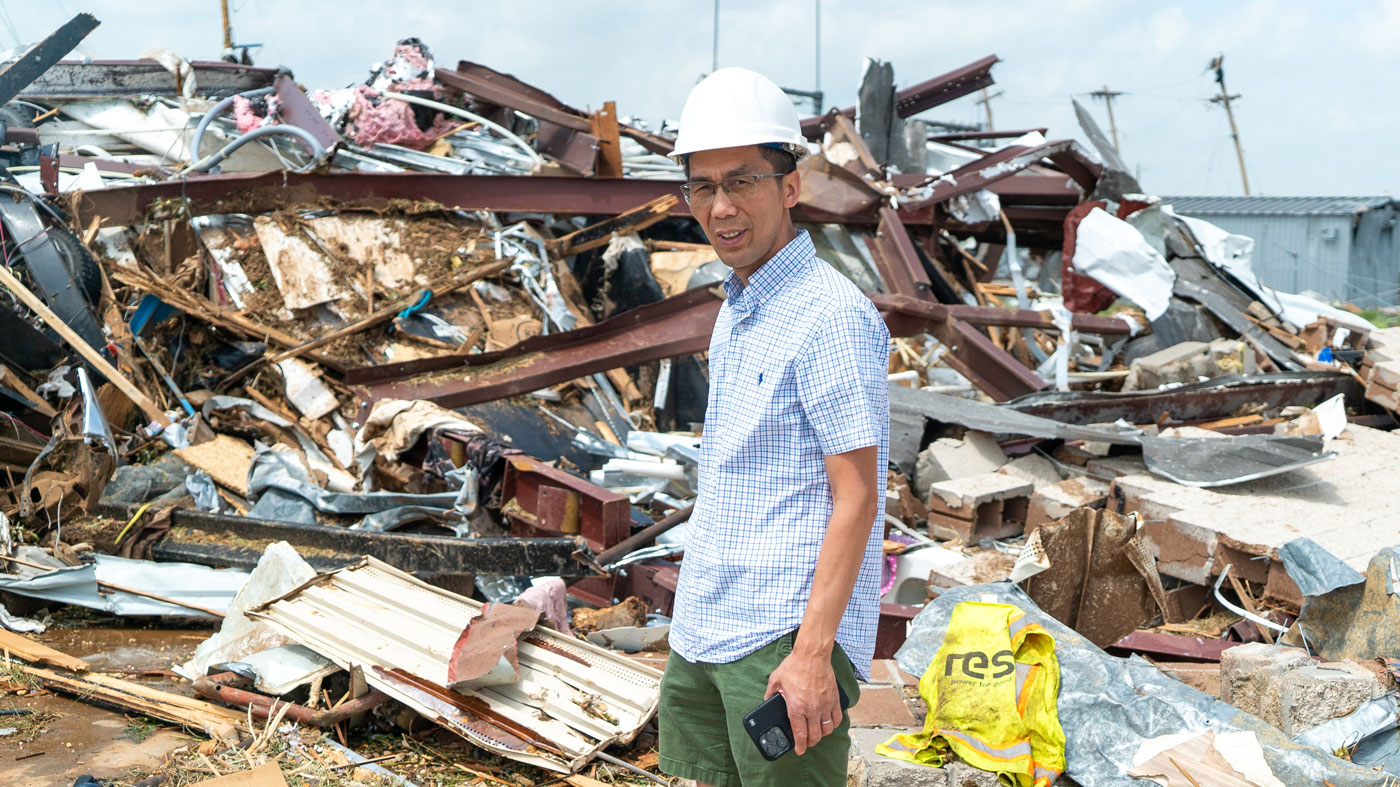
Zuo is a structural/wind engineering professor with Texas Tech University’s Department of Civil, Environmental & Construction Engineering. He also is the technical director of wind engineering at the National Wind Institute, which provides students with the broad education necessary to pursue research that will harness the benefits of wind and solve problems related to the detrimental effects of windstorms.
Even through his related research of structural dynamics and wind loading of structures, Zuo quickly learned understanding those topics and experiencing the damage firsthand were entirely different.
“I don’t know how they can recover,” he noted about Matador. “These are like some of the social problems we have to deal with. It’s not just a structural problem.”
Zuo traveled to the town of nearly 800 people northeast of Lubbock the morning after the storm to observe the damage to buildings from the tornado’s sheer force.
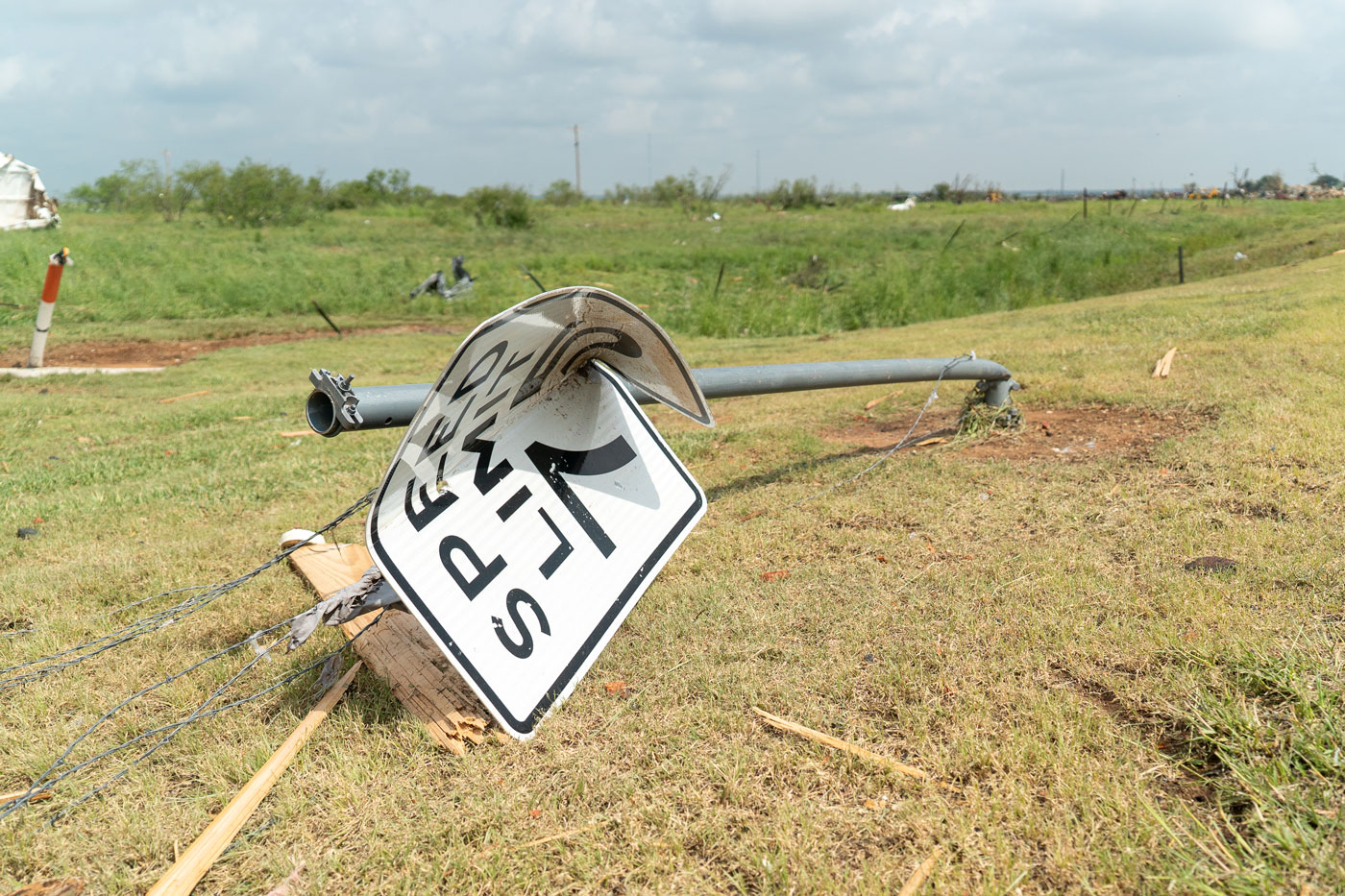
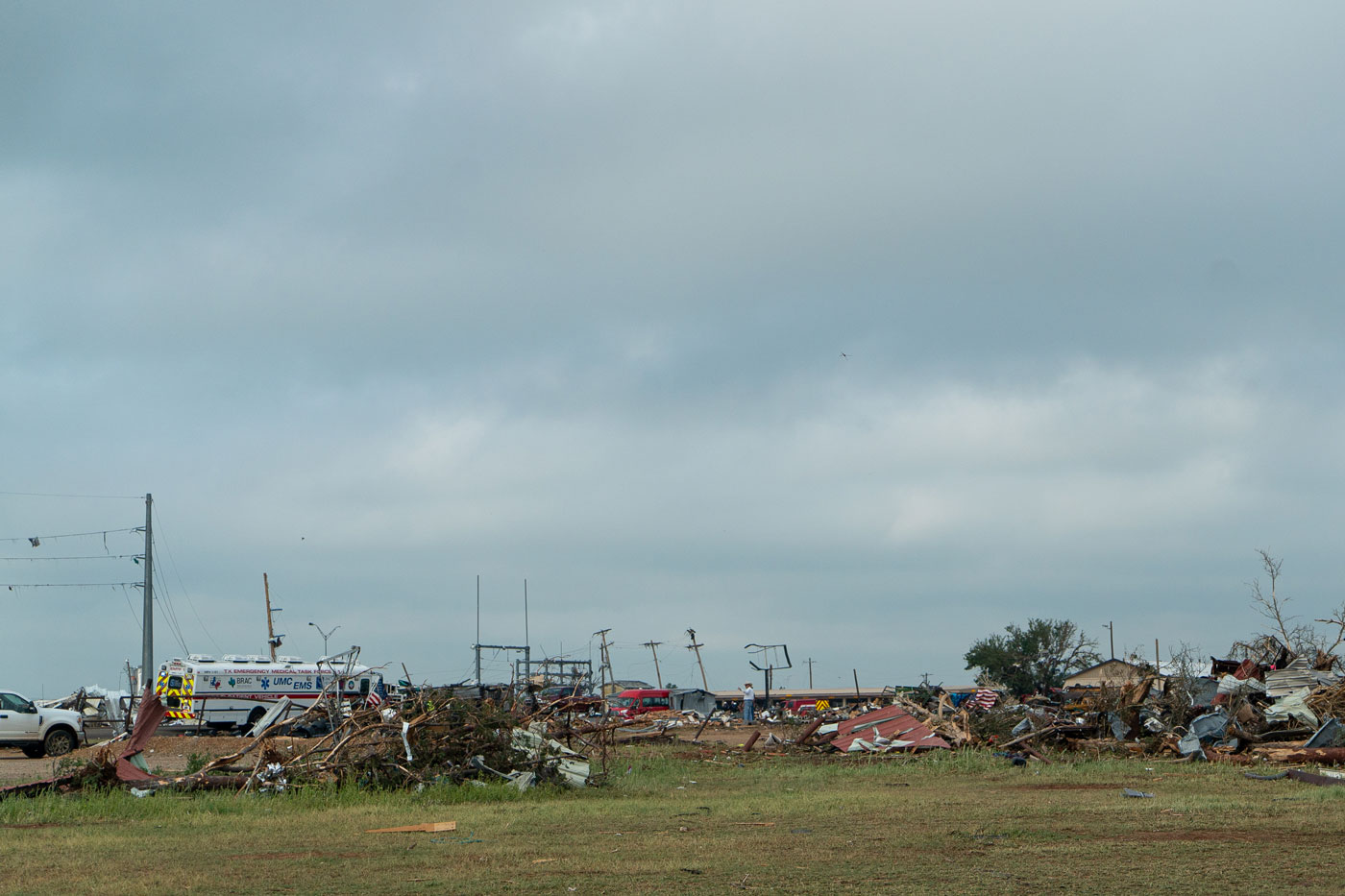
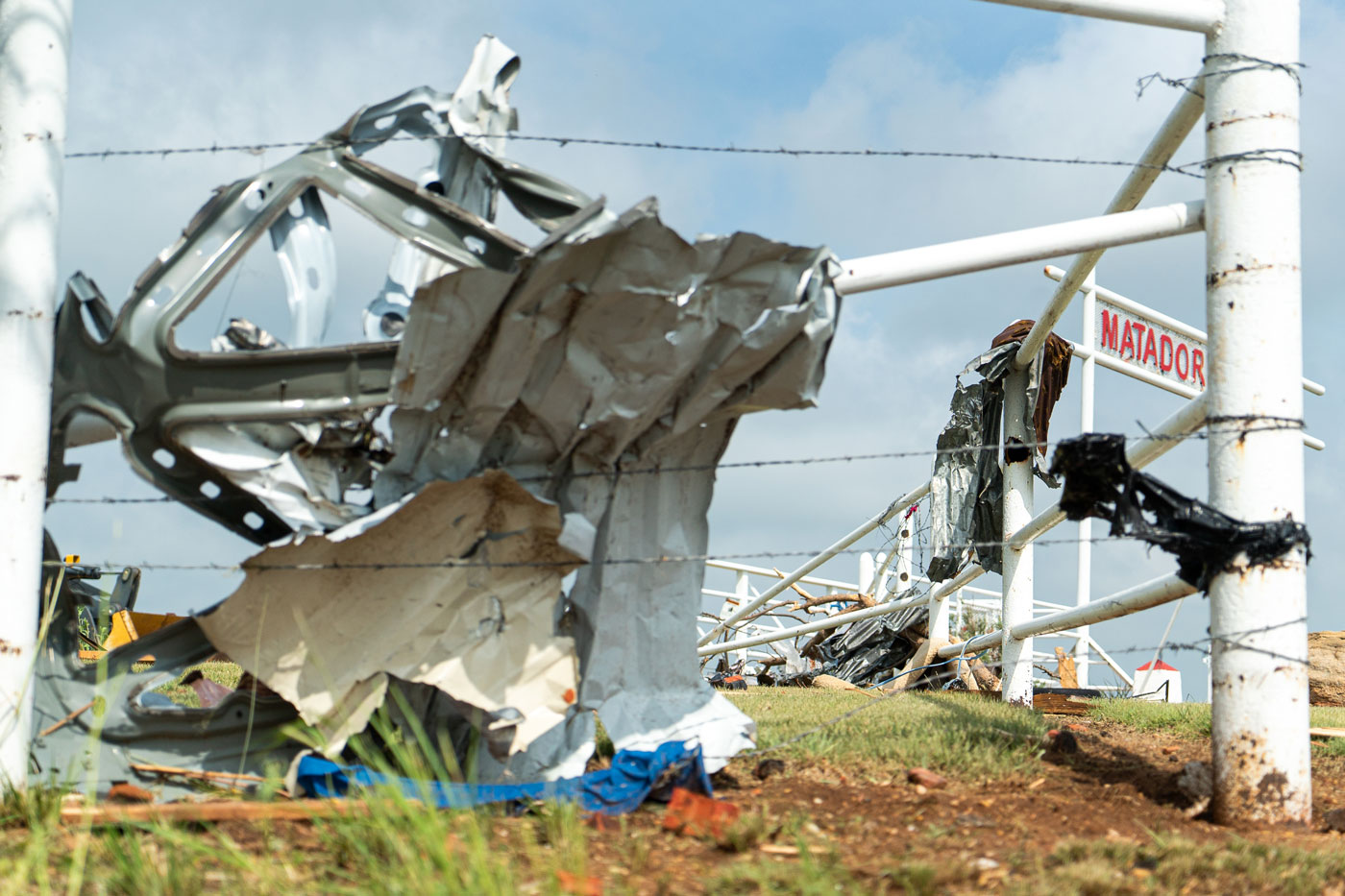
He considered how Matador was the second Texas Panhandle town to be devastated by a tornado within a week’s span, following the Perryton tornado that hit June 15. This surprised Zuo, because he recently learned the middle of the region where severe tornadoes occur (also known as Tornado Alley) was shifting to the east.
“We’re supposed to be becoming less susceptible to tornadoes,” he mused. “So, it’s crazy.”
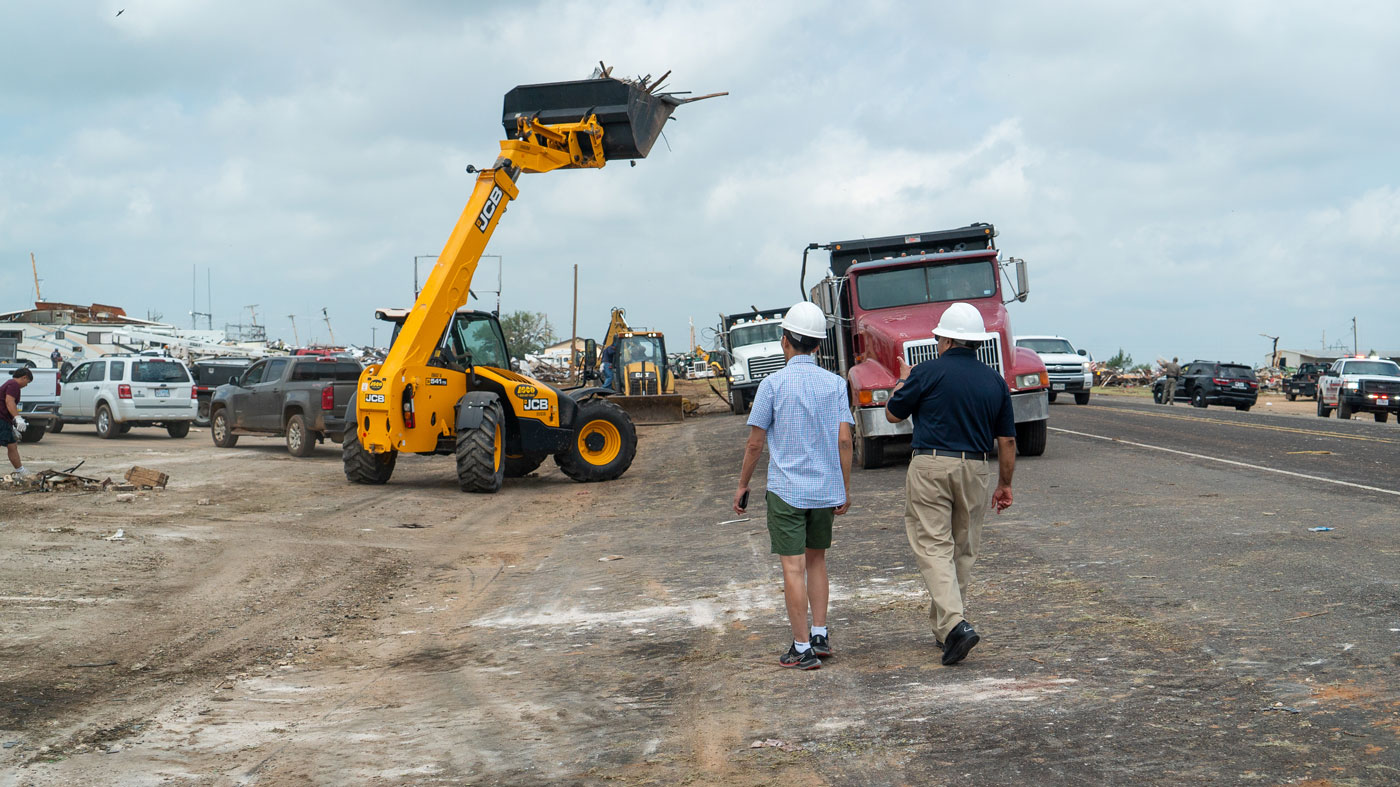
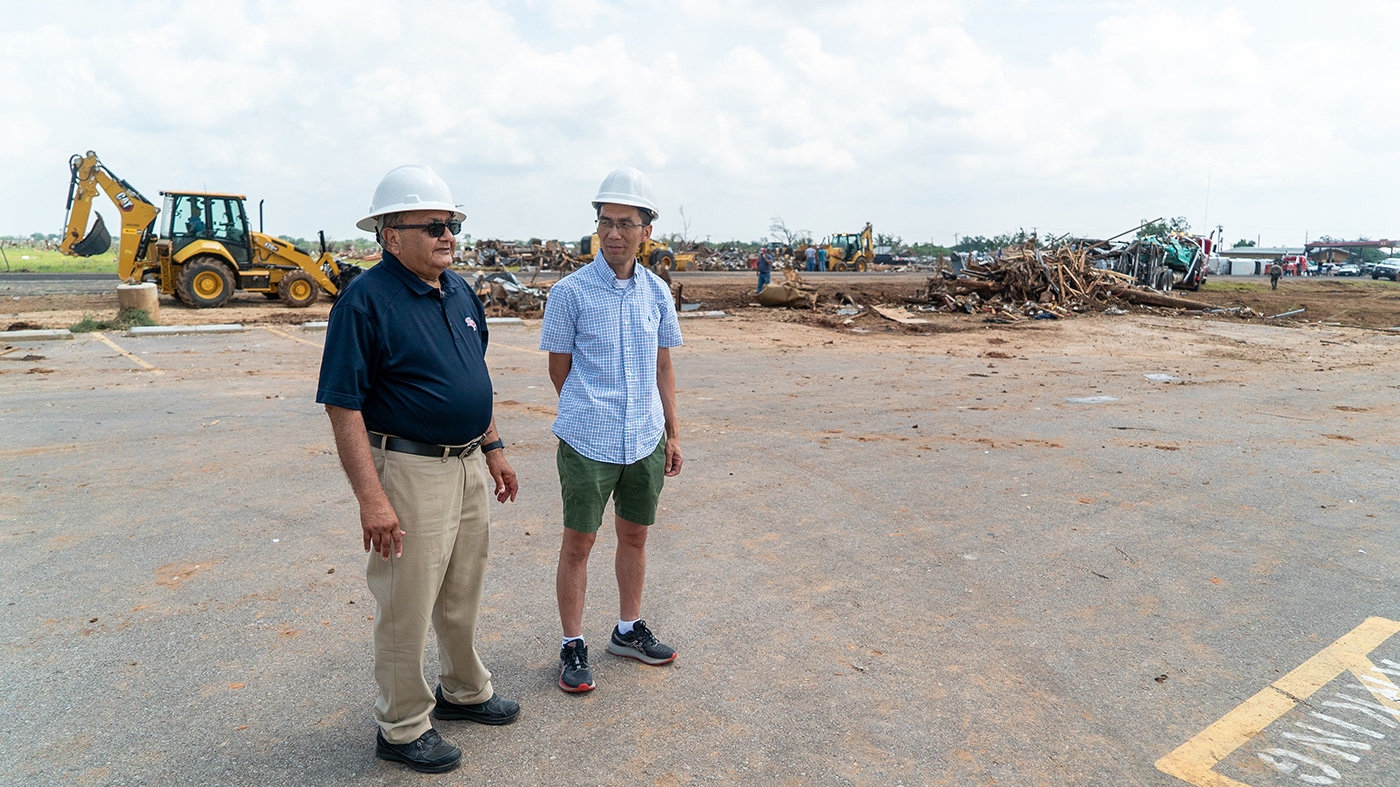
From beneath the safety of white hard hats, Zuo walked alongside Kishor Mehta, a Horn Professor of structural/wind engineering, cofounder of the research and education program that has become the National Wind Institute and the first Texas Tech faculty member elected to the National Academy of Engineering.
The engineers tried to avoid tangled wire and scattered wreckage on the path to a one-story strip motel. They wondered among themselves if the hail struck before or after there was no longer a roof sheltering the seven rooms.
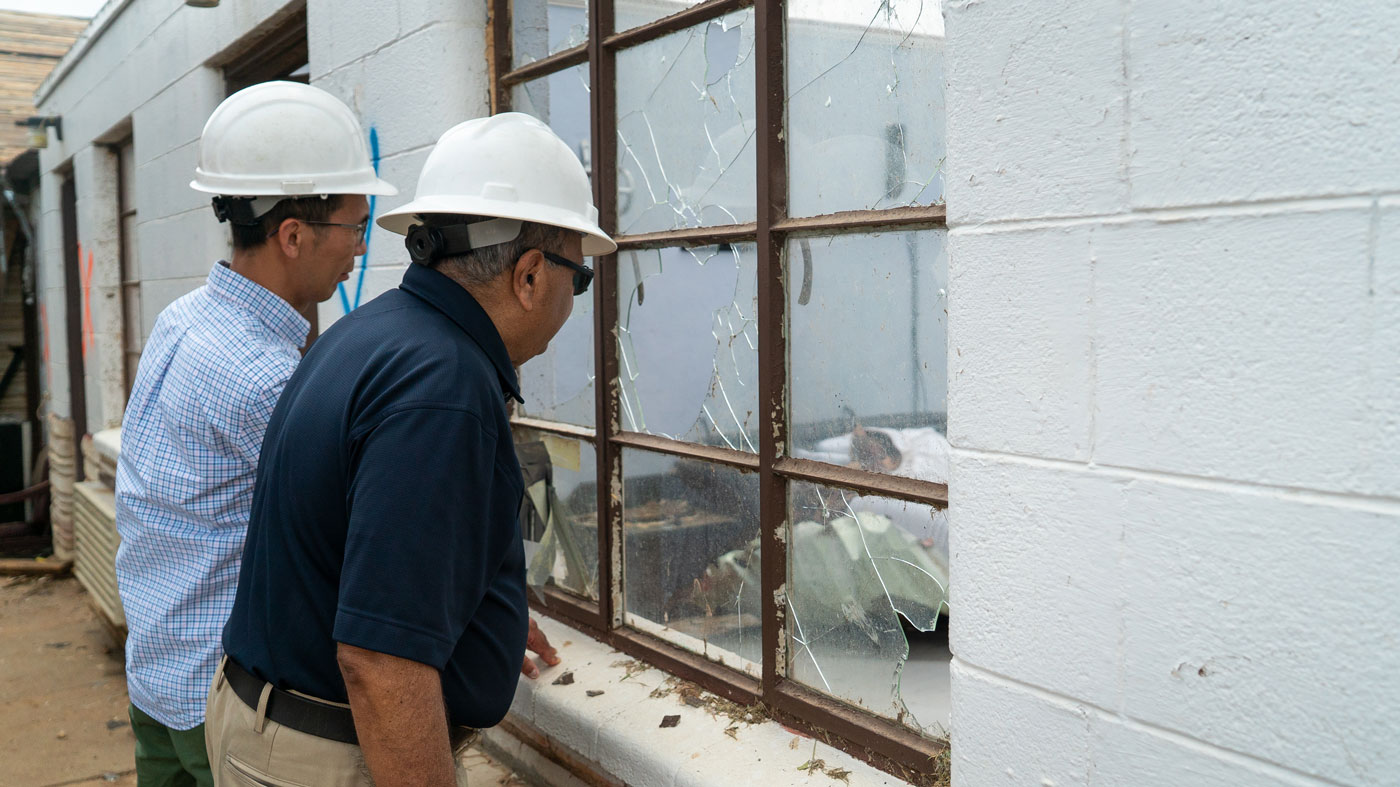
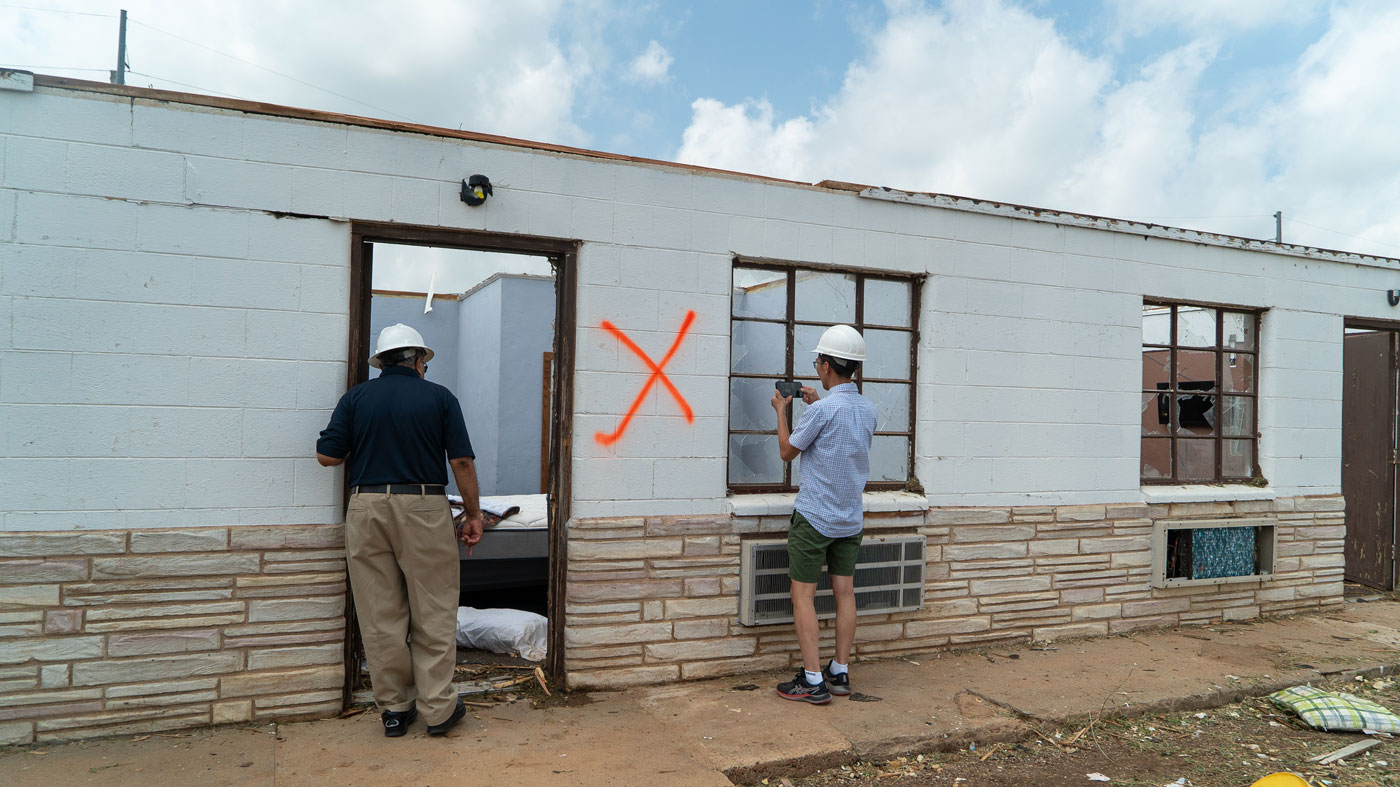
Zuo snapped a few pictures and then joined Mehta in his assessment of the damage from behind jagged window glass.
The motel walls remained standing with mostly mild to moderate damage to the interior, which intrigued the pair of researchers.
“I wonder if the TV is still working,” Mehta thought aloud, as it remained nearly untouched in one room.
Zuo and Mehta concluded occupants of a single room/bathroom setup do not have many shelter options.
“Even though people say to hide in the bathroom because you have all the walls surrounding a small space and so on, look at how the bathroom is damaged,” Zuo said. “The bathroom window is right there because the bathroom is not in the middle of the house. So, it doesn’t really matter.”
Once they gathered an understanding of how the tornado affected each building, Zuo and Mehta aimed to bring the information back to campus to determine how to better construct buildings that can withstand future life-threatening storms, particularly through the Wind Hazard and Infrastructure Performance Center (WHIP-C).
The sole purpose of the WHIP-C is to enhance the resiliency of buildings and infrastructures to resist the extreme winds of hurricanes, tornadoes and other windstorms. Wind hazard-related research is conducted daily at Texas Tech, Florida International University and Florida Institute of Technology, all of which make up the WHIP-C (which was established with the sponsorship of the National Science Foundation’s Industry-University Cooperative Research Center Program).
Mehta is the WHIP-C director. As the Texas Tech site director, Zuo supervises research that utilizes world-class facilities such as one of the largest tornado simulators in the world.
“We do experiments to try and see what the tornado loading forces on these buildings are like,” Zuo explained, “so students can correlate what they’re seeing in the field to what we’re seeing in the lab.”
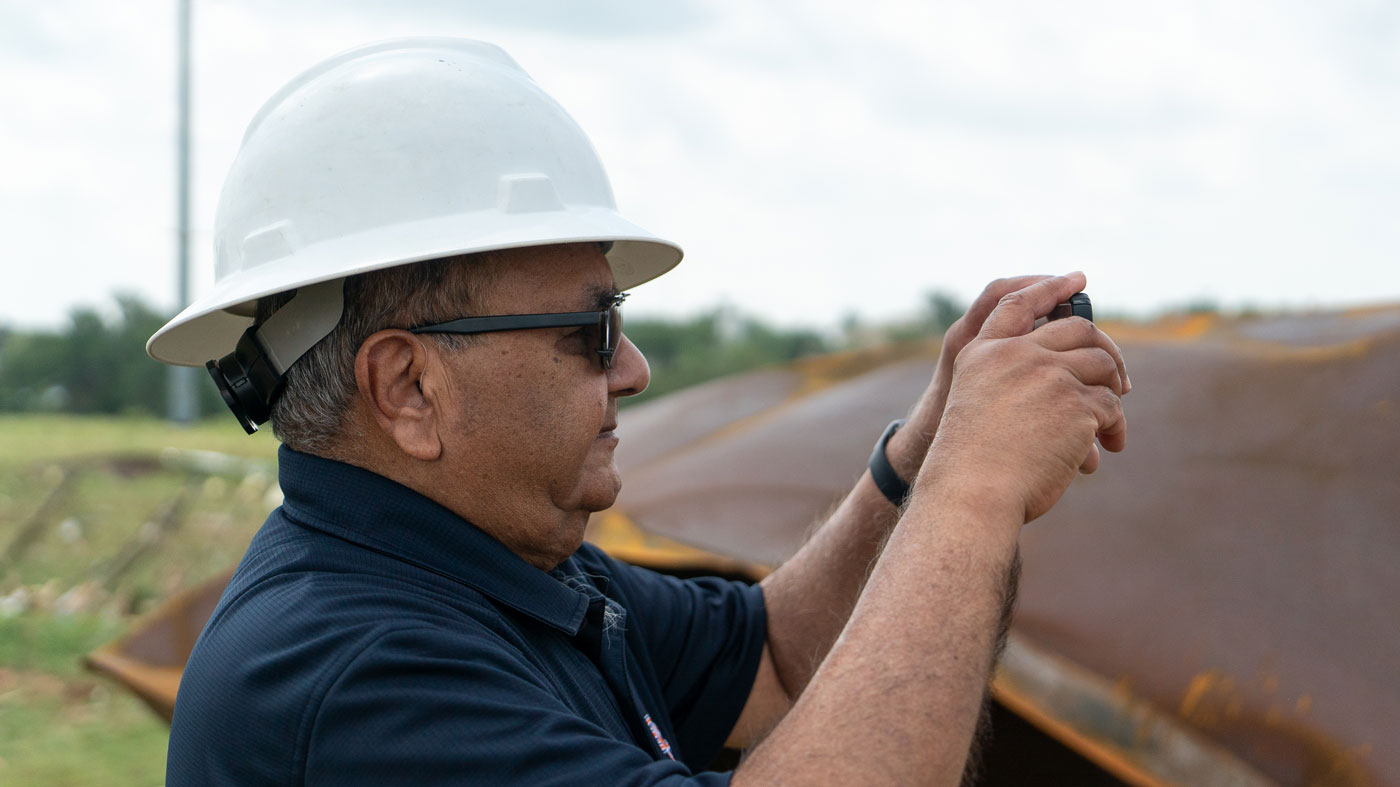
While their conclusions from the lab build understanding, Mehta wanted this field trip to provide students with perspective: a viewpoint he has developed over a lifetime of work.
“He is the most experienced,” Zuo mentioned about Mehta. “He’s been doing this for 60 years.”
Reform from the Storm
Unlike Zuo, Mehta has been witness to many scenes of similar wreckage from severe tornados, the worst the 1970 tornado in Lubbock: the first documented multi-vortex F5 (Fujita Scale rating) tornado in history that killed 26 people and injured at least 500.
Nothing about the devastation in Matador particularly surprised Mehta – except the death count.
“The number of people killed was four,” he said. “I’m not sure exactly under what condition, but that’s a surprise for a small town like this to create that many deaths.”
Mehta keeps returning to these disaster zones because he hopes to lessen the overwhelming losses communities face from natural hazards. After the Lubbock tornado, Mehta proved several ways he could make a difference by investing time and research into how different materials were impacted by tornadic forces.
For one, he saw a need to enhance the Fujita Scale to rate the intensity of tornadoes based on the amount of damage caused. He later led a team effort to develop the Enhanced Fujita (EF) Scale, which became operational in 2007 and is still used today.
As Mehta walked past a house that looked like a pile of sticks collapsed upon its foundation, he was quickly able to estimate the tornado’s EF rating.
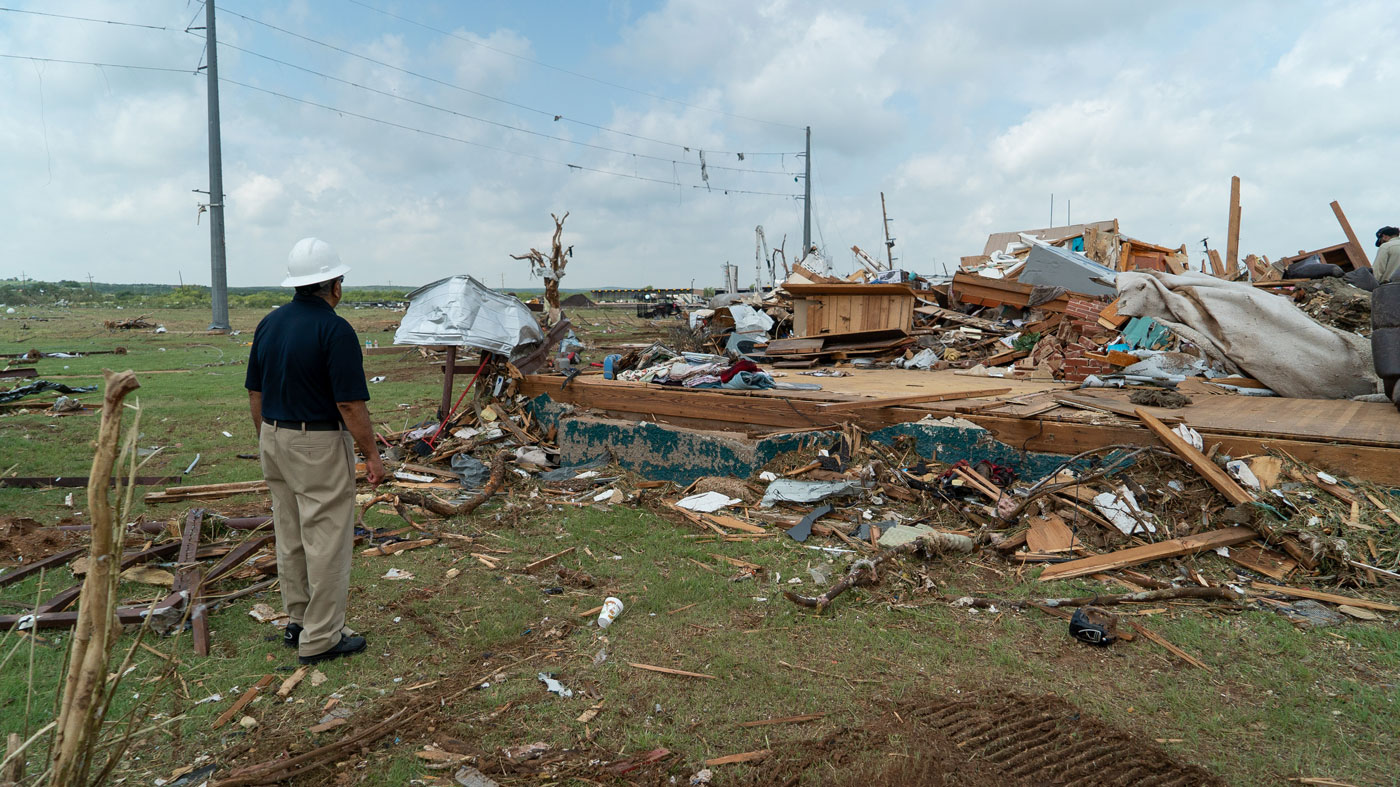
“It’s at least an EF-3,” he said.
This was agreed upon by the National Weather Service (NWS), who asked Mehta and Zuo for their opinions on the official rating.
The NWS has welcomed guidance from Mehta several times in the past. In the 1970s and 80s, he and his colleagues provided the NWS with information that concluded large open areas in buildings, such as gymnasiums, were more likely to get damaged by extreme windstorms. This led to the development of criteria for above-ground shelters and a mandate that schools in Tornado Alley have required shelters.
In Matador’s case, Motley County High School sheltered most of the community who rushed from the baseball-sized hail into the basement.
“That helps,” Mehta commented. “The National Weather Service is also beginning to pass out our information about where’s the best place to be in a school if you don't have a shelter. You should stay away from the outside wall and go to a smaller room or narrow hallway. That’s where you’re likely to survive as compared to a large auditorium.”
Mehta’s team even used their findings to create a new standard for schools to be built with stronger materials, creating a safer, more stable structure. In a similar fashion, Mehta and Zuo’s thoughts swirled around the potential of improved roof structures and building materials as they continued their survey.
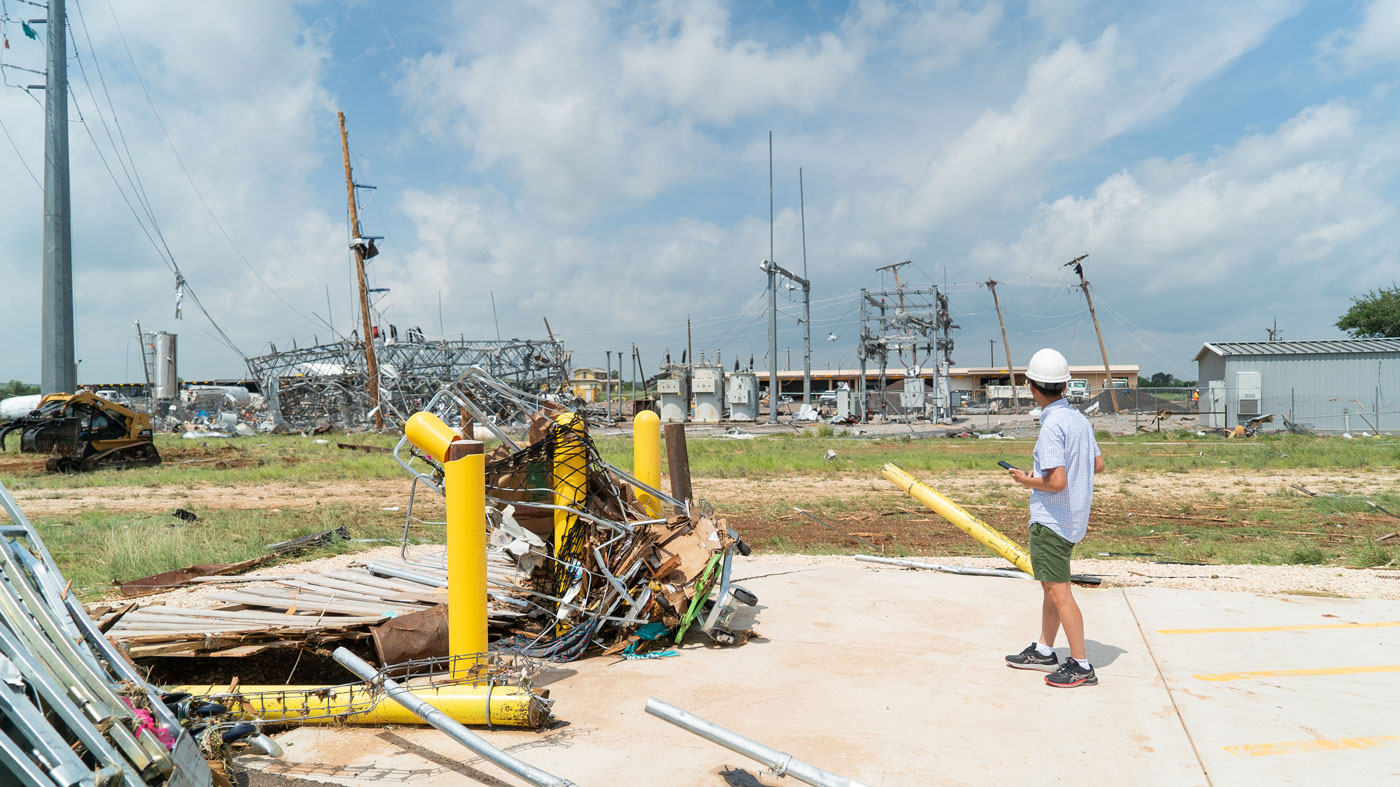
Tornado Takeaways
Along the way, Zuo was surprised to find Matador’s substation, which provides electricity to the town, almost gone. He was sure the installation was expertly engineered.
“They don’t have power in this weather, and today we’re getting up to 106 degrees,” he said with a note of concern.
In other cases, Zuo noticed structurally sound buildings such as a general store, constructed with a light steel frame, still got leveled. Some of the beams were actually twisted.
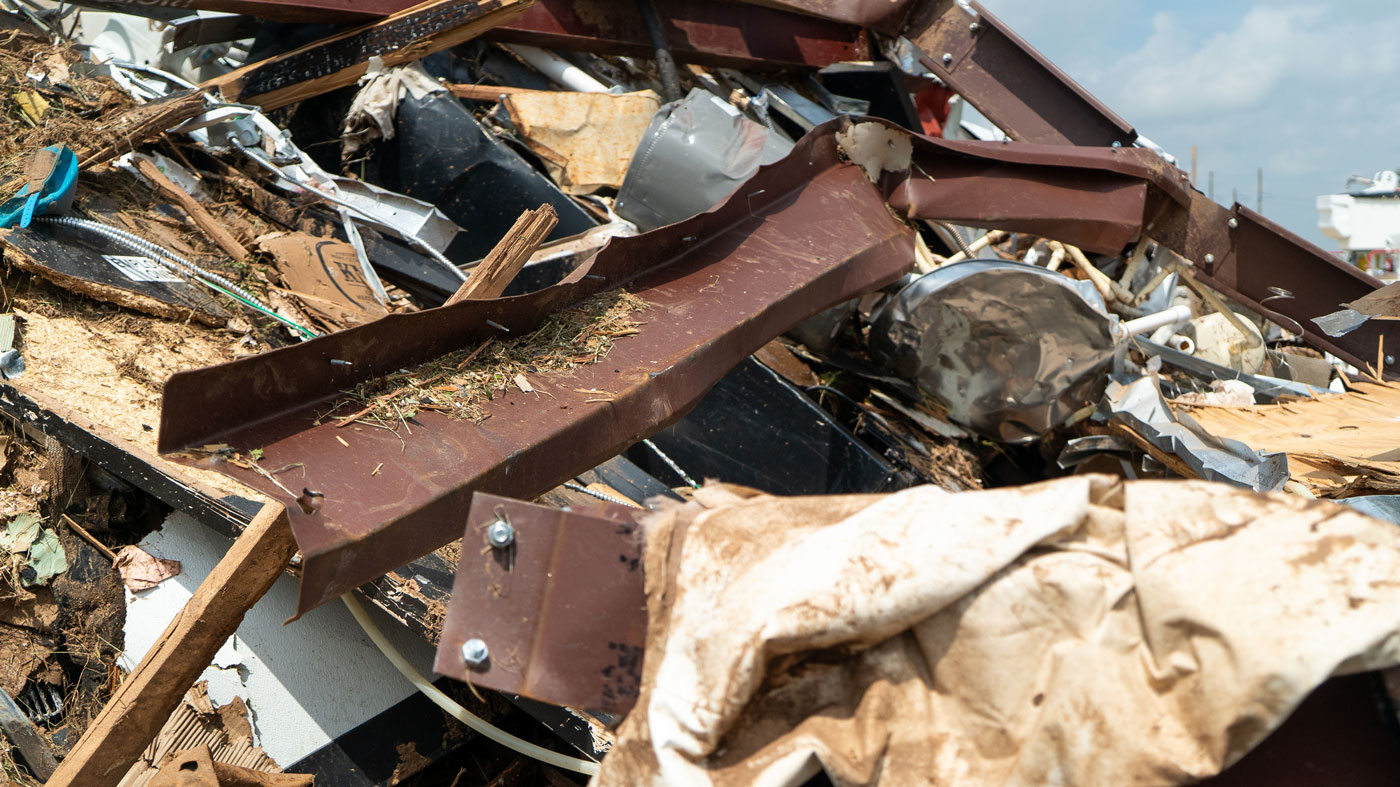
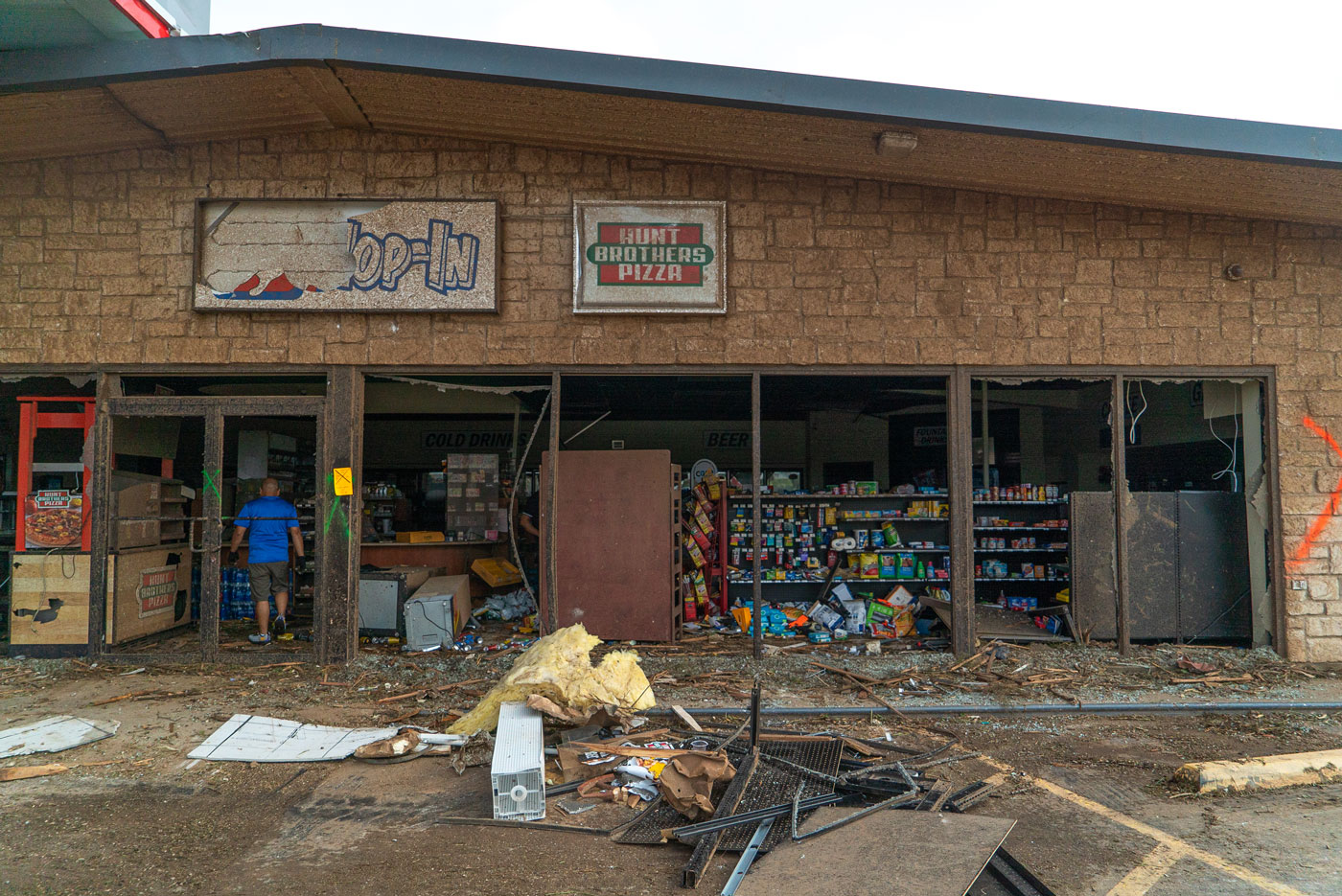
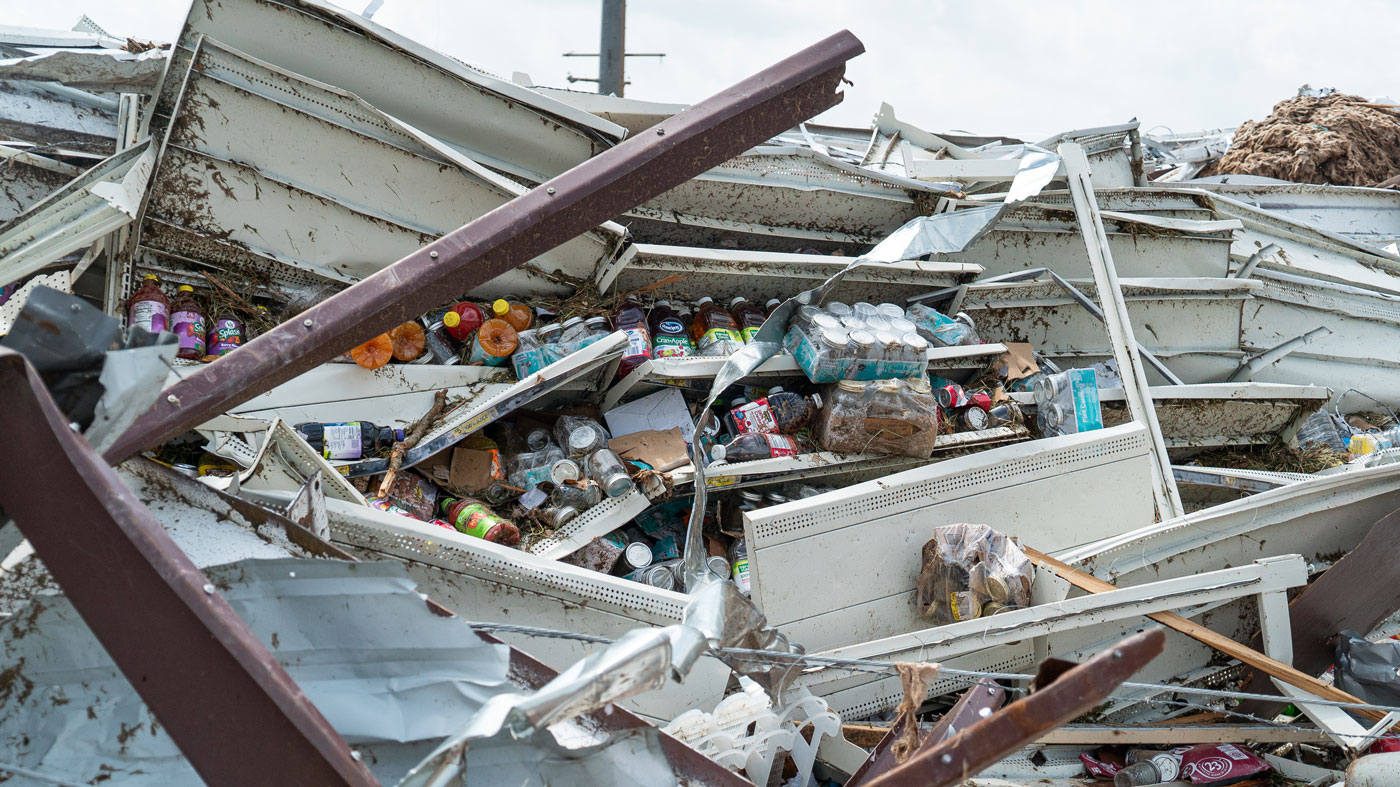
“Because the tornado was so strong, an EF-3, these buildings didn’t really have a chance,” Zuo resolved.
He learned from several others at the scene that a RV had blown into the store. A few blocks away, he noticed a gas station stood intact with items still shelved, but the windows were completely shattered.
Then, when he looked up at the transmission lines, he saw objects like steel plates tangled or dangling.
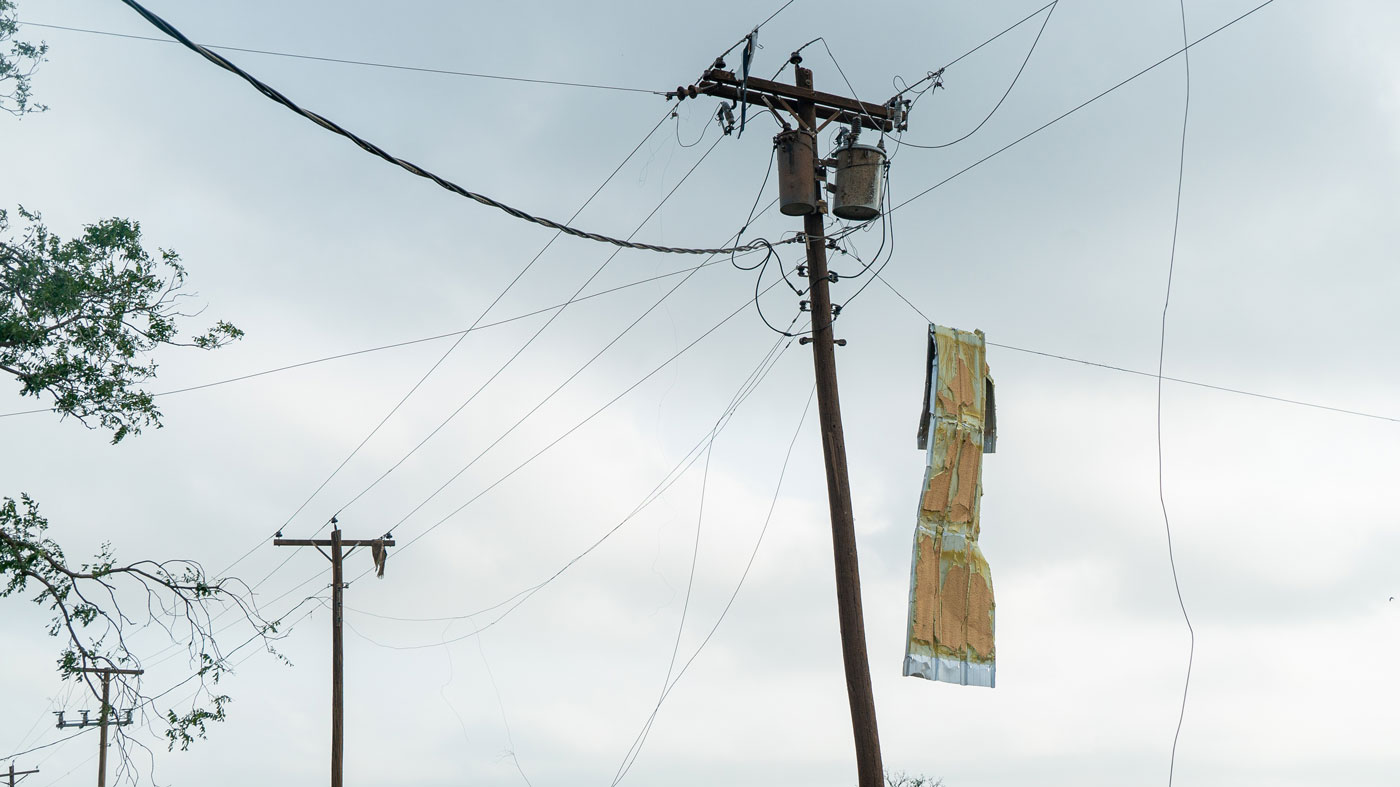
Moving forward, Zuo would like to incorporate more damage by airborne objects and debris into their research.
“When we’re in the lab, we don’t appreciate the damage that can occur because of debris impact,” he said. “We’ve just been focused on the force generated by the wind.”
While Zuo could make many suggestions to improve structures, he said the problem with his solutions is inefficient costs. The design would be widely unaffordable to build.
Zuo’s hope is to build a bridge that connects their research with reality.
“We need to prevent natural hazards from becoming a societal disaster,” he said. “Both civil infrastructure and social infrastructure allow people to recover better and faster. So, this is a very complex problem that has a lot of research needs.”
Zuo is ready for the challenge. He and several other Texas Tech professors plan to write a research proposal to study the resilience of rural communities hit with tornado hazards.
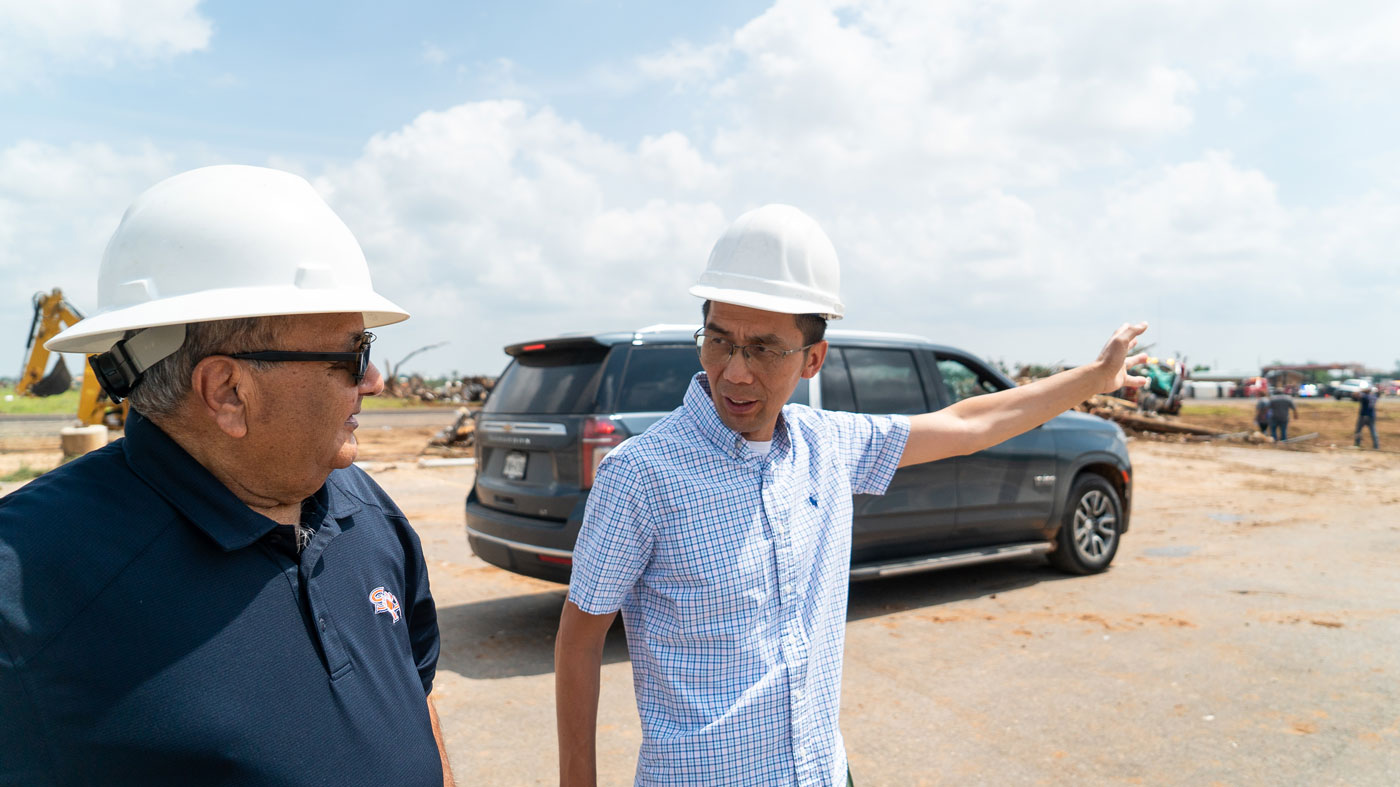
He already wants to seek answers to several questions.
“What happened before the tornado? What happened during it, and what happens after it?” Zuo asked. “We think it’s very important for us to understand what happens to see what we can learn from this and how to make things better.”
While those unaffected by the Matador tornado may forget the tragedy once it leaves headlines, Zuo knew the lost homes and suffering he witnessed would forever be etched into his mind – just as Mehta remembers the Lubbock tornado, 53 years ago, like yesterday.
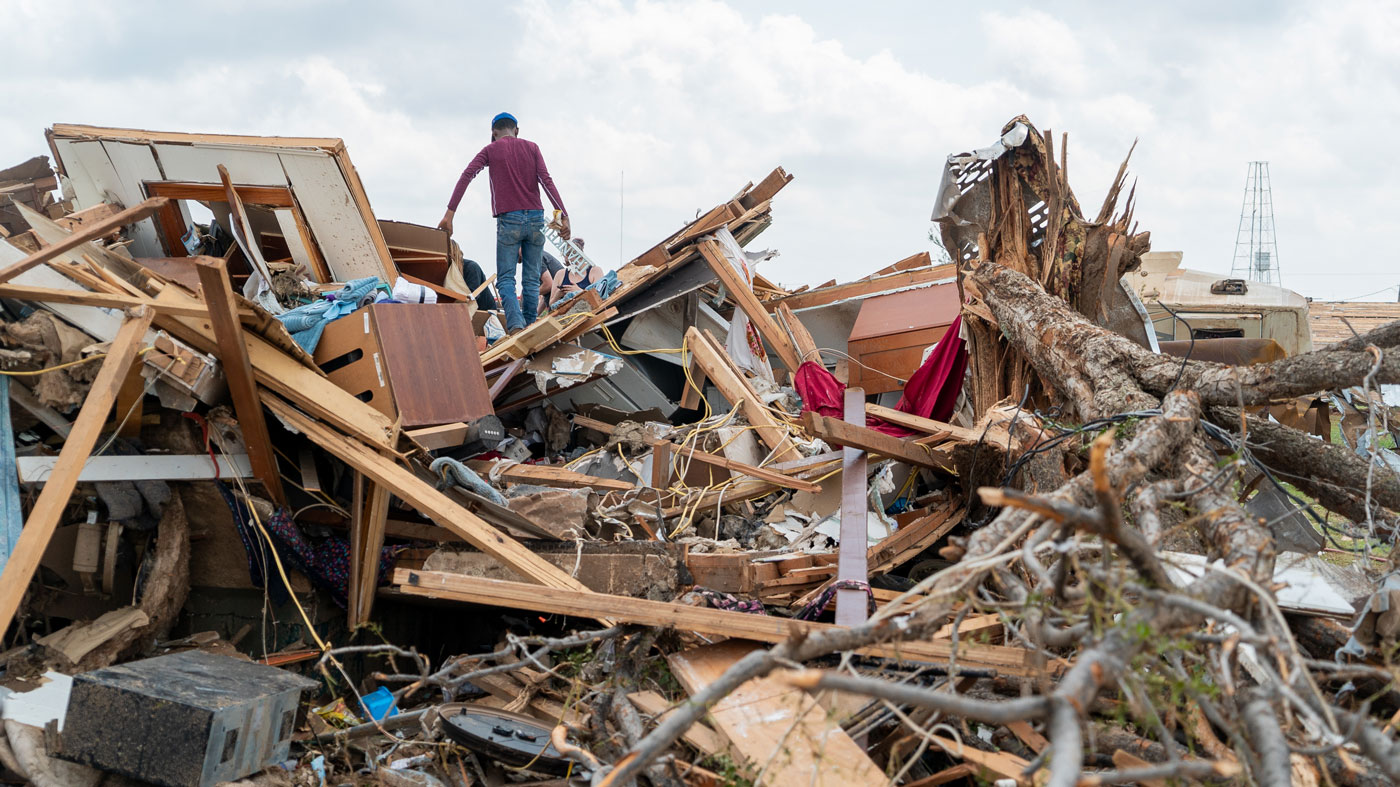
Walking past a ruinate home in the cleanup phase, a man dug through the splintered wood and rubble to retrieve a good-sized, freestanding cutout of the word “Thankful.”
Zuo and Mehta want tornado victims to feel just that. Not from surviving through pure luck – but science.
“This reinforces our belief that we are doing important things,” Zuo said. “We are doing something of value that can potentially save people and contribute to the integrity and awareness in communities – especially rural communities.”

